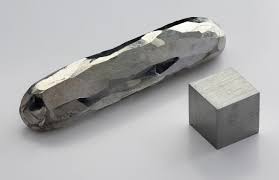Cadmium
Cadmium is a soft, malleable, ductile, silvery-white divalent metal. It is similar in many respects to zinc but forms complex compounds. Unlike most other metals, cadmium is resistant to corrosion and is used as a protective plate on other metals.
Cadmium became an important metal in the production of nickel-cadmium (Ni-Cd) rechargeable batteries and as a sacrificial corrosion-protection coating for iron and steel. Common industrial uses for cadmium today are in batteries, alloys, coatings (electroplating), solar cells, plastic stabilizers, and pigments.

